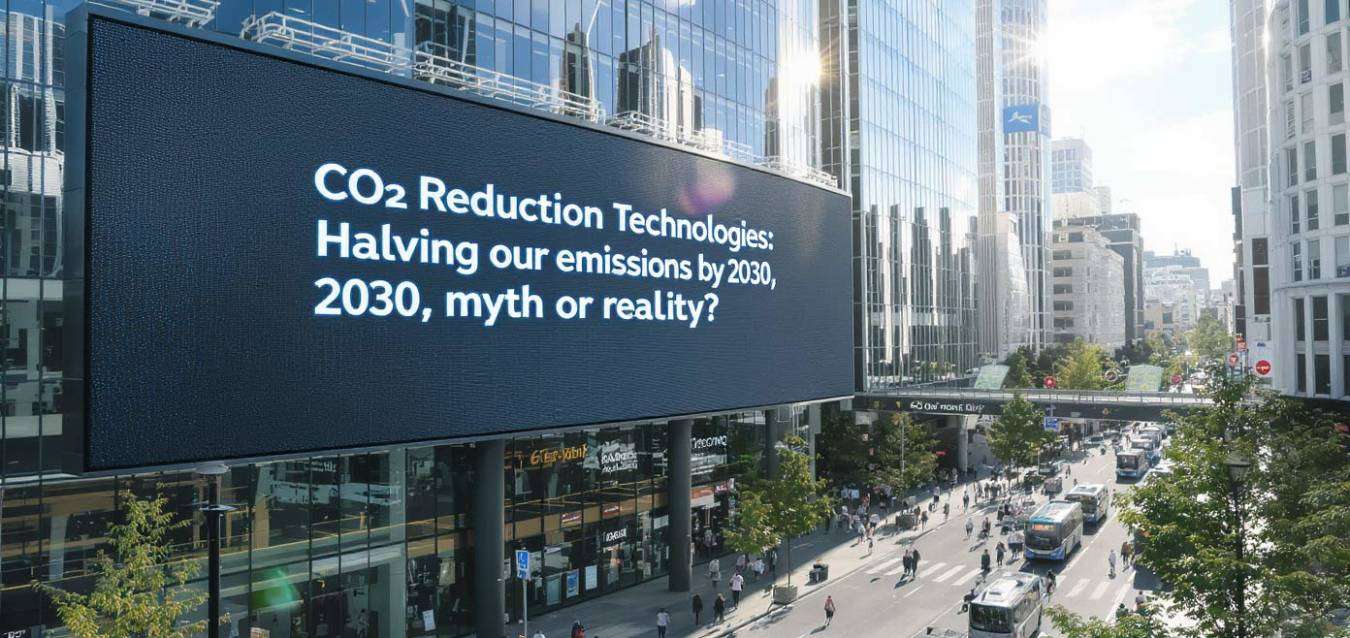CO2 Reduction Technologies: A Quantified Imperative in the Face of Climate Crisis
By 2023, according to the International Energy Agency, global CO2 emissions reached 36.8 billion tons – a historic record. To comply with the Paris Agreement and limit warming to 1.5°C, these emissions would need to be reduced by 50% by 2030, according to the latest report from the IPCC (IPCC SR15, 2018). CO2 reduction technologies are now at the heart of national strategies: direct capture of CO2 from the atmosphere (DAC), massive electrification, new low-carbon materials, artificial intelligence for energy optimization… Several pioneering countries, such as Norway with the Northern Lights project or China through its “supergrids” of electricity, are already testing these solutions on a large scale.
However, these technologies remain costly and sometimes controversial. Direct capture of CO2 can cost more than $600 per ton, according to Nature (2021), while low-carbon concrete struggles to establish itself against existing standards. Industries are making progress, but NGOs point to a risk of “technological solutionism” that would divert attention from the necessary sobriety. According to Fatih Birol, director of the IEA, “innovation alone will not be enough: strong public policies and a profound transformation of uses are needed”.
But some territories are leading the way. In Copenhagen, the combination of smart heat networks, passive buildings and electric mobility has reduced emissions by 60% since 1990. In Sacramento, AI optimizes the management of electricity and transport, reducing consumption by 15%. These concrete cases illustrate the real potential of CO2 reduction technologies, but also underline the need for an integrated approach, combining innovation, regulation and citizen engagement.
—
Major Innovations for CO2 Reduction: Between Promises and Realities
Among CO2 reduction technologies, carbon capture and storage (CCS) is growing rapidly. The Norwegian Northern Lights project, operational in 2024, aims to store 1.5 million tons of CO2 per year in underwater geological formations. According to the IEA’s Net Zero 2050 roadmap, the current CCS capacity would need to be multiplied by 100 to meet our 2030 objectives. Construction materials are also evolving: low-carbon concrete developed by Carbicrete or Holcim uses industrial waste and fixes CO2, reducing the footprint by 30 to 80%.
On the energy side, AI-driven smart grids, like in Austin (USA) or Lyon, optimize demand, integrate renewables and reduce losses. This is already resulting in a 10 to 20% reduction in local emissions. But the entry cost remains high, slowing deployment in emerging countries. Experts insist: without massive support from public authorities, these technologies will remain niches.
Scaling Obstacles: Costs, Regulation and Social Acceptance
The main obstacle to CO2 reduction technologies remains their cost and the slowness of regulations. In France, low-carbon concrete is still marginal due to lack of widespread approval. In the United States, pilot CCS projects suffer from long authorization delays. Social acceptability also weighs: underground storage raises concerns, as does AI perceived as opaque. Yet, alliances are being formed between communities, industries and citizens to accelerate the transition, as exemplified by the Zero Carbon Humber project in the UK.
—
CO2 Reduction Technologies: What Solutions for a Rapid Shift by 2030?
Given the magnitude of the challenge, there is no “silver bullet”. IPCC and IEA experts agree: a mix of CO2 reduction technologies is needed, reinforced by ambitious policies and behavior changes. Increase in the price of carbon, targeted subsidies, accelerated standardization of low-carbon materials: these public levers are crucial. The integration of electrical networks, the sharing of energy data via AI and the generalization of low-carbon renovation could, combined, achieve a reduction of 40 to 50% of emissions in leading cities by 2030.
But success will depend on a global and equitable scale-up. Technology transfer to the South, inclusion of citizens in deployment choices and transparency of results are essential to avoid “sacrifice zones”. In conclusion, CO2 reduction technologies are a powerful tool, but their real impact will depend on our collective ability to move beyond announcement logics and enter an era of concrete transformation.
—
Sources
https://www.ipcc.ch/sr15/chapter/chapter-4/
https://www.iea.org/reports/net-zero-by-2050
https://www.nature.com/articles/s41586-021-04155-x
https://northernlightsccs.com/about/
https://www.carbonbrief.org/analysis-which-countries-are-on-track-to-achieve-…
https://www.gov.uk/government/news/zero-carbon-humber-wins-75m-government-fun…
https://www.lemonde.fr/planete/article/2023/03/15/le-beton-bas-carbone-peut-i…
https://www.ipcc.ch/sr15/chapter/chapter-4/
https://www.iea.org/reports/net-zero-by-2050
https://www.nature.com/articles/s41586-021-04155-x
https://northernlightsccs.com/about/
https://www.carbonbrief.org/analysis-which-countries-are-on-track-to-achieve-…
https://www.gov.uk/government/news/zero-carbon-humber-wins-75m-government-fun…
https://www.lemonde.fr/planete/article/2023/03/15/le-beton-bas-carbone-peut-i…



